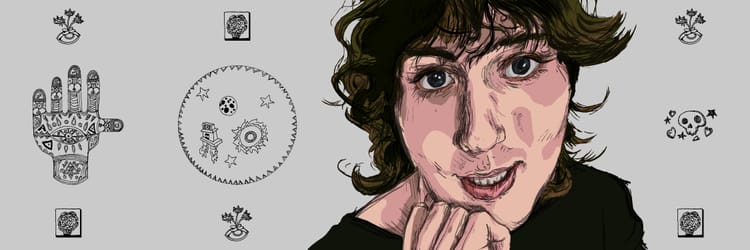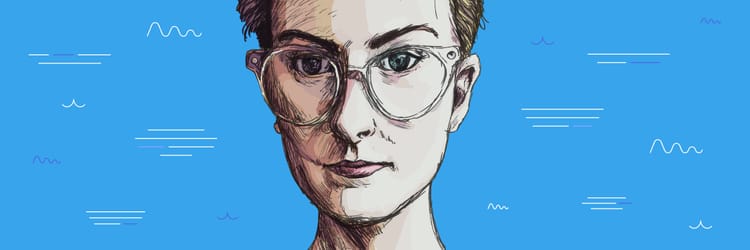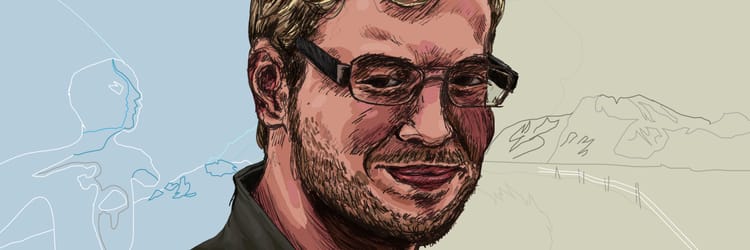Mario Von Rickenbach’s games are just that: games

Header illustration by Jordan Rosenberg
///
Mario Von Rickenbach started working in game design because he was disappointed with architecture. During his time at the Zurich University of the Arts, Von Rickenbach found the buildings he was designing in the architecture program—model-sized, still, full of imaginary people doing imaginary things—dull.
“I’m not a good planner,” he laughed as he explained this to me. “Only after I built a model would I see all the changes that needed to be made.” But Von Rickenbach isn’t the type to do his part of a project and step back. Architecture didn’t feel right to him in part because he wouldn’t be laying the bricks himself.
“Style is a result—and not the goal—of design choices.”
By working with games he could be present at every phase in the design process: prototyping, tweaking, and launch. Since changing from draftsman to game designer, Von Rickenbach has contributed more than 15 games, including a spaceship simulator for five footpedals, an iOS game based on an ancient Indian board game, and a racing game with track designs shaped by the player in the lead. But Von Rickenbach is best known for the 2014 IGF nominee Drei, which he worked on with Christian Etter.
Drei brings you all the way back to the playground. Your task is simple: Working alone or with up to two other builders online, you must stack blocks in such a way that they touch a little light hovering in midair. But when you’re working with others online, stacking the blocks just so requires a fair amount of coordination, so Drei gives you some basic commands—slow, left, right, stop—in 18 different languages to help you and your collaborators online find common ground. As the obstacles get more fiendish and the little lights hang even further out of reach, that language becomes essential not just for coordinating with your teammates, but for celebrating your successes together.

In a way, Drei‘s polyglot nature represents Von Rickenbach’s primary concerns as a designer. “Style is completely unimportant,” he said, as if it were a matter long since settled. “At the end, style is a result—and not the goal—of design choices. What matters is the way you interact with it.” For Von Rickenbach, every element of the game must support what the player does within it. Drei, for example, drops players in an unadorned gray space with white cubes. No decorative elements interject themselves between the three variables in play: the cubes, the room, and the player. This is not just a matter of principle; it’s a way of showing what the game is quintessentially about.
“I don’t like when people are trying to make a game in a certain style even if the gameplay doesn’t match that. Pixel graphics or low-poly games, for example. If it’s not done purposefully it does nothing for the game.” When he was a student, Von Rickenbach found himself making this same mistake of placing style before purpose. He designed a rendering of a snowboarding helmet using polygonal shapes more at home in the digital world than the analog. “It looks nice, but the style is not really connected to the purpose,” Von Rickenbach explained. “It’s a perfect example of what I hate to see people do in games.”

Aside from the visual elements that suggest what a player might be able to do in a given context, Von Rickenbach’s other major concern as a designer is the way the interaction takes place. Even though several of his games have been designed for touchscreens, Von Rickenbach dislikes them. “The immediacy of touch is good, but the lack of feedback is a problem,” he explained. Even though he likes the physical feedback controllers provide, Von Rickenbach feels strongly that touchscreens more directly connect the player to the gameplay. In a way, it’s quite literally a blank slate. The way he sees it, by working with touch you’re not “forced to use the predefined set of sticks and buttons of a gamepad.” With touch, you’re not making a game for a controller; you’re making controls for a game.
Von Rickenbach’s current project is a game based on the short film Plug & Play, directed by Michael Frei. You can get a preview of what the full game will be like with this demo project, Finger Simulator.



